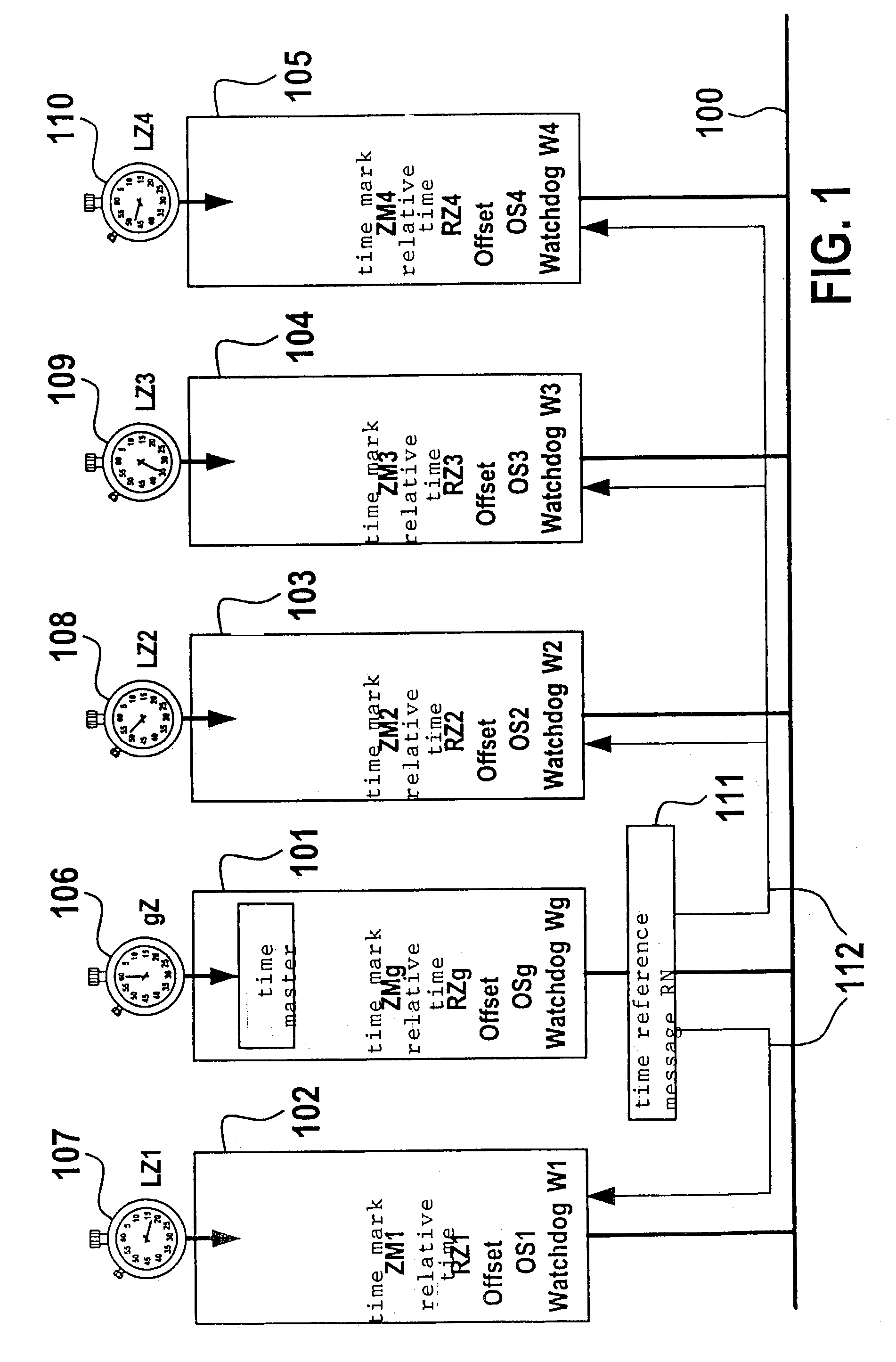Method and device for exchanging data between at least two stations connected via a bus system
a bus system and data exchange technology, applied in the direction of data switching networks, instruments, generating/distributing signals, etc., can solve the problems of insufficient bus capacity utilization, methods and configurations cannot provide optimal, etc., and achieve the effect of fast detection of failed stations
- Summary
- Abstract
- Description
- Claims
- Application Information
AI Technical Summary
Benefits of technology
Problems solved by technology
Method used
Image
Examples
Embodiment Construction
[0024]TTCAN is essentially based on a time-triggered, periodic communication which is clocked by a time master (node, station) with the aid of a time reference message, or in shorter terms, reference message RN. The period until the next reference message RN is referred to as basic cycle and divided into n time windows (see FIG. 2). Each time window allows exclusive transmission of a periodic message of different length. These periodic messages are transmitted in a TTCAN controller by using time marks which are linked to the expiration of a logically relevant time. However, TTCAN makes it also possible for free time windows to be taken into account. These time windows may be used for so-called “spontaneous” messages, the access to the bus being used via the arbitration schema of CAN within these time windows (arbitrating messages). The synchronization of the time master clock (global time gZ) with the internal local time of the individual nodes lZ1 through lZ4 is taken into account ...
PUM
 Login to View More
Login to View More Abstract
Description
Claims
Application Information
 Login to View More
Login to View More - R&D
- Intellectual Property
- Life Sciences
- Materials
- Tech Scout
- Unparalleled Data Quality
- Higher Quality Content
- 60% Fewer Hallucinations
Browse by: Latest US Patents, China's latest patents, Technical Efficacy Thesaurus, Application Domain, Technology Topic, Popular Technical Reports.
© 2025 PatSnap. All rights reserved.Legal|Privacy policy|Modern Slavery Act Transparency Statement|Sitemap|About US| Contact US: help@patsnap.com



